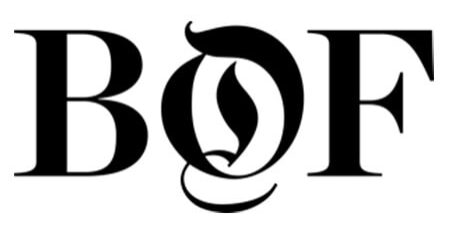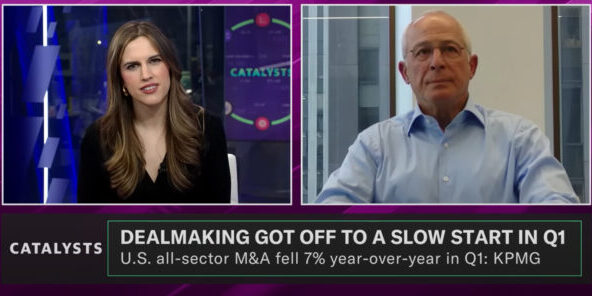Navigating Through The Next Restructuring Cycle: The Untested Impact Of Private Credit
Navigating Through The Next Restructuring Cycle: The Untested Impact Of Private Credit
By Tero Jänne, Partner, Co-Head of Capital Transformation & Debt Advisory
While the non-bank market of collateralized loan obligations (CLOs) and private credit has been in existence for decades, its influence on how corporations are able to restructure their balance sheets is largely untested. Given the tremendous growth of this asset class in recent years, the next cycle of distress may be very different from past ones. Understanding how this evolving corporate debt landscape dynamic will influence lender group decision making is critical for borrowers and their advisors, so that they can successfully navigate through future balance sheet challenges.
How Did We Get Here?
On September 15, 2008, Lehman Brothers filed for Chapter 11, the largest U.S. bankruptcy in history. The event signaled to some the end to years of growth in corporate leverage and financial excess, as well as the commencement of a prolonged cycle of corporate restructurings. Except Lehman’s bankruptcy turned out to be nothing of the kind. With unprecedent Federal Reserve intervention, financial excesses of the late 2000s were quickly rescued, and then ultimately repeated in greater volume. Between 2008 and April 2022, the Fed’s balance sheet grew from less than $1 trillion to almost $9 trillion in the name of credit market stability and long-term interest rate management. At the same time, the Fed Funds Rate moved from 2.00% to zero by December 2008 and remained there for the next seven years (with a subsequent two-year return to near zero, following a period of small upticks).
While many have focused on how the Fed’s actions pushed investors into riskier assets such as speculative stocks and cryptocurrencies, another by-product of the Fed’s actions occurred on the credit market side. At the end of 2008, following the Lehman bankruptcy, private credit had approximately $234 billion of assets under management (AUM). By the end of 2021, private credit reached over $1.2 trillion of AUM, including $850 billion of CLO AUM.
To appreciate the impact on the new debt issuance market, CLOs are estimated to account for 65% -70% of investor demand for leverage loan products today. What were previously just occasional participants in corporate balance sheets, are now anchor investors to almost every new debt issuance. These participants are, as a result, increasingly critical parties to every future debt restructuring.
A False Test – The Pandemic
While default rates in CLOs have been exceptionally low to date, it’s less certain that those low rates can be maintained in the future. As CLOs are simply buying new debt market issuances, it stands to reason that over time their portfolios should experience market levels of defaults. However, the ability of CLO managers to digest significant portfolio stress is not well tested and may in fact lead to unforeseen consequences. During the peak of the pandemic panic in March 2020, CLOs came close to being tested, as economic and market uncertainty created significant portfolio pressures and the pricing of BB rated loans dropped to 78.15 – signaling the likely prospect of significant losses in holdings for most portfolios. But the Fed’s massive influx of liquidity into the market quickly also rescued the loan markets, which snapped back in pricing. By April 18, 2020 (less than a month later) the same loan pricing index had recovered to 93.54, and private credit resumed its AUM growth. So, in effect, the sample size of how CLOs would react was too short to evaluate their impact on corporate restructurings. AUM for private credit is now almost $400 billion (or 46%) larger than it was right before the onset of the pandemic at the end of 2019.
How CLO Motivations Can Influence Outcomes
To appreciate why CLOs may act differently than other traditional debt holders requires an understanding of their behavioral motivations and organizational structure. CLOs are by design asset managers, and as such their principal motivation is to increase assets under management and, as a result, management fees. A key driver of asset growth is the ability to demonstrate low levels of portfolio losses. As such, avoiding defaults on loans, not selling holdings below par, and long hold periods are critical components to attract future capital. This contrasts with traditional credit hedge fund behavioral motivations, who tend to view loan defaults as favorable events that provide triggers that allow them to maximize returns on invested capital. So, what is a ‘good’ credit event for
one loan market participant is very much a ‘bad’ credit event for CLOs and their asset accumulation model. As a result, a CLO’s response to a potential credit event is by its very nature different from traditional distressed loan participants such as credit hedge funds.
Similarly, organizational differences can come to play in the behavior of CLOs and similarly diverge from traditional credit hedge funds. While traditional funds generally focus on a handful of large positions, with teams of seasoned professionals analyzing every debt basket and potential point of legal leverage with a borrower, CLOs are structured very differently. Under a CLO structure, debt holdings are typically spread widely across sectors in order to manage exposure and credit risk. As such, oversight of the loan portfolio is much more limited, and focused on keeping an eye on overall credit quality across a large number of holdings. The resulting ‘light touch’ loan portfolio management model works well in a low default environment, when limited time is required to be dedicated to any specific borrower.
Size Isn’t Necessarily Bandwidth
During times of high distress and potential defaults, the ‘light touch’ model can quickly come under strain. The impact is further magnified when repeated across multiple CLOs holding loan positions of the same borrower. The CLO model is also strained if the individuals responsible for portfolio monitoring are not only time constrained, but also lack debt restructuring experience and understanding of bankruptcy law (as is often the case). In one recent market analysis, just three troubled corporate credits had CLO manager counts of 78, 50, and 21 respectively, representing approximately $2 billion in total CLO exposure. There are a number of other constraints impacting a CLO’s ability to respond to a distressed situation, but they only further amplify these behavioral and organizational challenges.
Refreshing the Playbook
How will the evolving non-bank lender landscape influence outcomes in the next restructuring cycle? The answer is uncertain, but clearly some traditional restructuring playbook assumptions will need to be refreshed.
First, bigger is not always better. While having a large institution as a debt holder may generally be a positive, it may not be the case if that holder is a passive CLO that is unable to dedicate the time or the effort to structuring a transaction. Second, viewing CLOs as being more borrower friendly may actually be largely dependent on the issue at hand. For example, the desire to obtain emergency incremental financing from an existing lender group is likely much more difficult with a CLO heavy lender base that is generally not equipped to function in that manner. Third, the perceived benefit of large passive CLO holdings keeping debt away from ‘unfriendly’ credit funds may in fact be a recipe for balance sheet paralysis. CLOs want to remain debt holders, and that motivation may result in a growing class of zombie capital structures – no matter the desire of a borrower to deleverage.
So, how should borrowers prepare for the next cycle of distress? Much of the answer rests in properly understanding how the non-bank market of CLOs and private credit has changed the traditional lender landscape, and in hiring the right advisors who also appreciate that dynamic.





